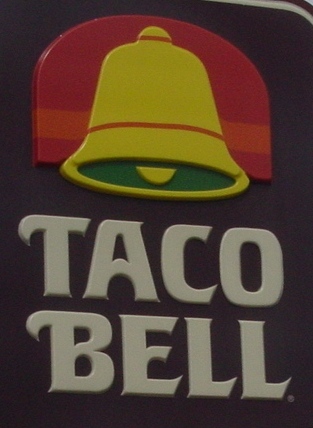By: Dr. Ken Broda Bahm –
Imagine this: you’re sued for making false claims about your product. What do you do? Issue a terse public statement and hunker down for discovery? Not Taco Bell. When an Alabama law firm filed a class action accusing the company of using meat filling with only 36% beef, the company responded by placing full page advertisements in Wall Street Journal, New York Times, USA Today and other papers that read “Thank you for suing us (Here’s the truth about our seasoned beef)” providing a forceful response that the filling is 88% beef with the remaining 12% being mostly water and spices. Now imagine that less than three months after filing suit, the Plaintiff withdraws the suit with no agreement or settlement of any kind. What do you do? Pop some Champagne corks and quietly go back to business? Not Taco Bell. When the Plaintiffs’ withdrew their lawsuit last week, the company again took out advertisements in the countries’ major newspapers. But this time, the ads were even pithier: “Would it kill you to say you’re sorry?” the company asks the Plaintiffs’ firm?
However you may feel about Taco Bell as a cuisine or a company, there is something going on here that carries an important message for anyone who sells a product that may be find itself in the cross hairs of litigation. The message: Sometimes it makes sense to go on the offense.
We know from research (Obermiller, Spangenber & MacLachlan, 2005) that around two-thirds of consumers will doubt the truthfulness of ads, and consequently try to make product decisions based on other information. Among those with the highest skepticism, even an information-based advertisement (relying on a clear and logical presentation of facts rather than emotion) is likely to fail. This shows not only why the lawsuit poses a particular danger to the company (because it falls in line with a cynicism of product claims) but it also points out the challenges Taco Bell faces in any response. So to make sure that a reasoned answer would stand a chance of being heard, Taco Bell had to be bold and attention-getting in response.
For Taco Bell, the claims, whether true or false, posed a profound threat to the company’s credibility and market share. There was just a limited window of time, after which the “36% beef” figure would become entrenched in the public mind. This is a dilemma that other companies have frequently found themselves in. Just last week, for example, a lawsuit in Florida was allowed to proceed against Whole Foods Market Inc. accusing the socially conscious company of knowingly selling as “certified organic” vegetables grown by forced prison labor using highly polluted river water. It will be interesting to see if Whole Foods takes a similar tack against these claims.
While Taco Bell’s novel response has been discussed in a number of blogs, what hasn’t been explored is exactly what made it a wise decision for the company to take the offense. In my view, there are three factors weighing in Taco Bell’s favor that serve as a guide to other companies looking at similar strategies.
1. The company seems to have had truth on its side. While the firm filing suit claimed to have the results of a lab analysis showing the taco filling is only around 36% beef, that information never surfaced in any form that could be verified. To the extent that the 88% figure is credible (and the withdrawal of the lawsuit may be a relevant sign here), then the Taco-Bell-eating public is likely to see that level of beef as high enough. But the response hinges on Taco Bell being right about the 88%, and in legal controversies where the facts are more nuanced, an aggressive response from the company may just create an added danger.
2. There was no danger of putting gasoline on a fire. That is, if an offensive response would have just added attention to a bad conversation, then it would have been counterproductive. But in this case, the attention was huge to begin with, and the story was getting very high levels of coverage from most news organizations, and even from late night comics. The only option at that stage was to aggressively get in front of the story.
3. There was a positive component to the message. If the company’s response had been entirely negative (e.g., just attacking the law firm), then it would have been seen as meanspirited or defensive. But in this case, Taco Bell wisely saw the controversy as a chance to say something positive about its product, and to get a lot of news coverage in the process.
Of course, the wisdom of Taco Bell’s strategy could reverse if an independent study backing up the Plaintiff firm’s claims about 36% beef ever materializes, but for now, the score seems to be Plaintiffs’ firm: 0, Taco Bell: 1.
It won’t always be possible, or smart, for an accused company to go on the offensive, but when the conditions are right…Yo Quiero a smart offense!
______
 Carl Obermiller, Eric Spangenberg and Douglas L. MacLachlan (2005). Ad Skepticism: The Consequences of Disbelief Journal of Advertising, 34 (3), 7-17
Carl Obermiller, Eric Spangenberg and Douglas L. MacLachlan (2005). Ad Skepticism: The Consequences of Disbelief Journal of Advertising, 34 (3), 7-17
Photo Credit: compujeramey (Jeramey Jannene), Flickr Creative Commons
